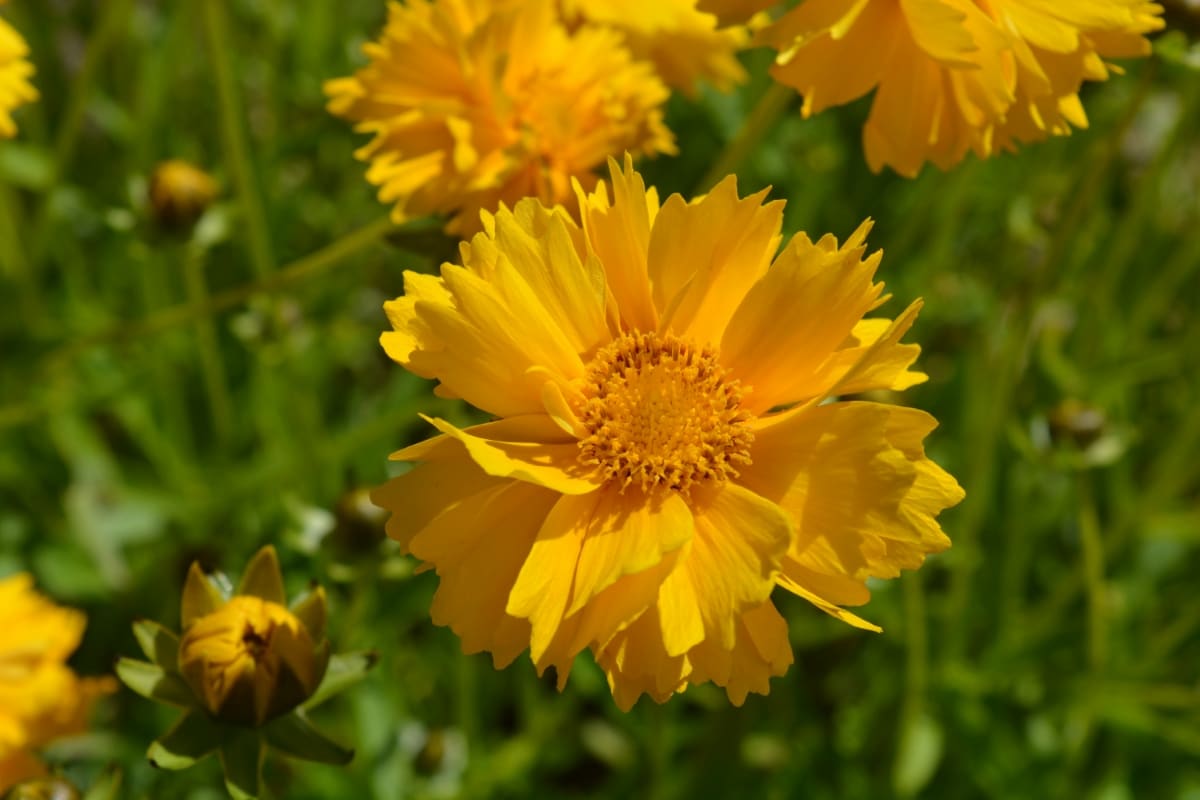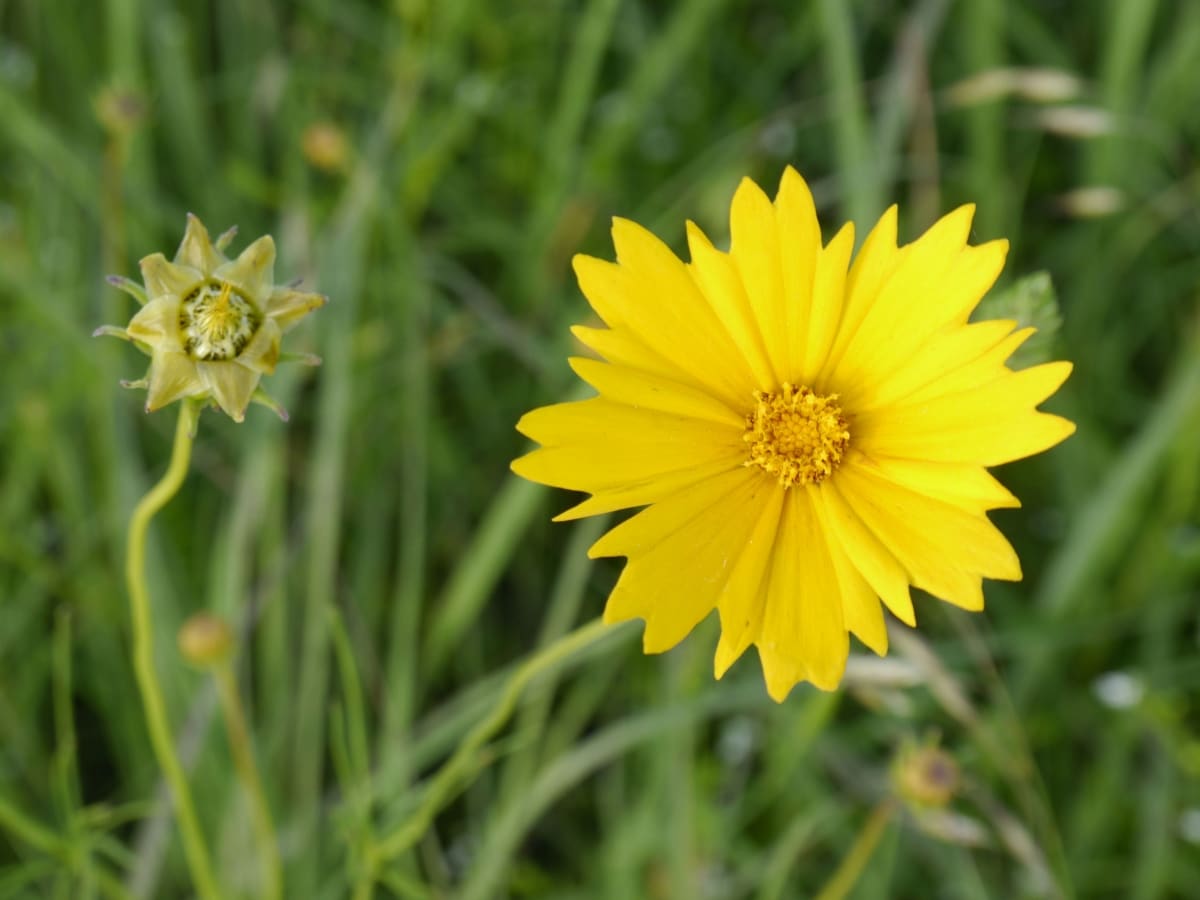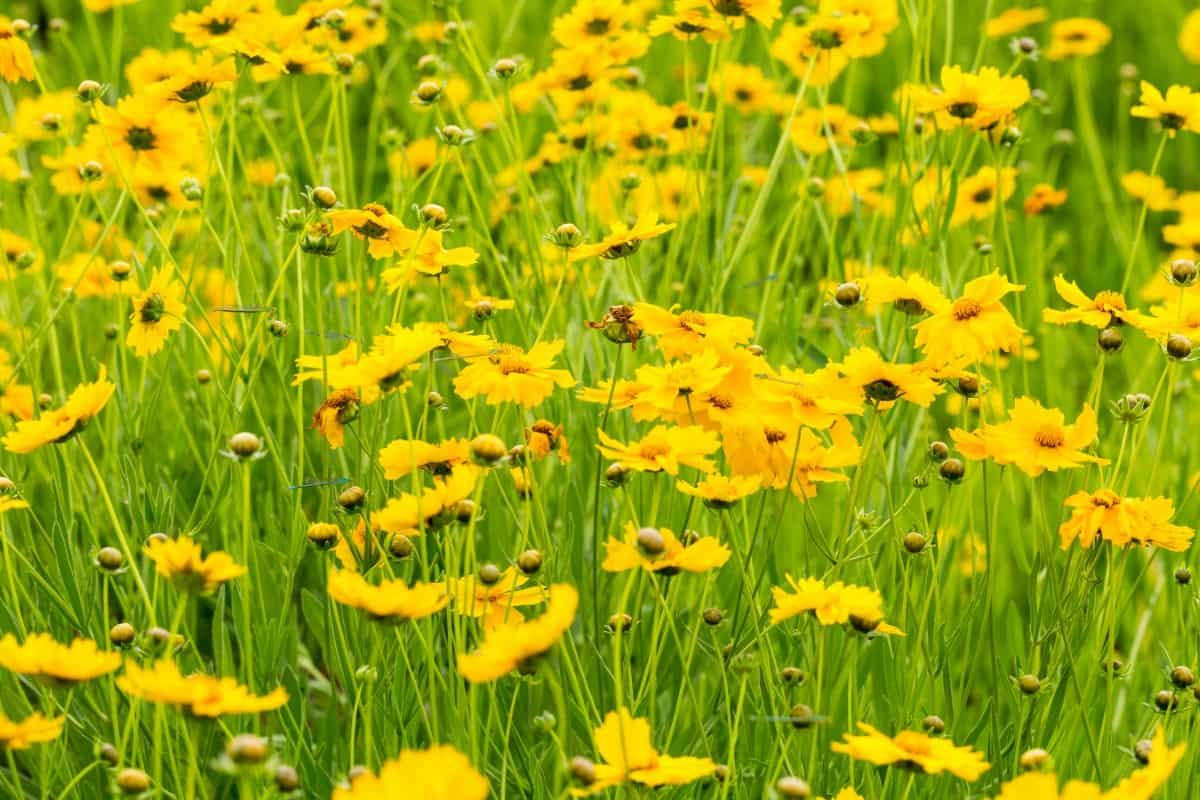Neem oil, a natural and effective solution, has gained popularity in gardening, especially for treating pests and diseases in tickseed plants. This article delves into the correct usage, preparation, and safety measures of neem oil, ensuring a healthy, pest-free garden.

How to Use Neem Oil on Tickseed Plants
Neem Oil and Its Benefits for Tickseed Plants
Neem oil is a popular choice for gardeners who prefer organic solutions to protect their plants. The use of neem oil on plants, particularly on tickseed varieties, offers multiple benefits. It acts as a deterrent for pests due to its strong smell and taste, making it unappealing for bugs to feast on the plants. The applications of neem oil in plant care go beyond pest control; it also aids in the management of fungal diseases, a prevalent concern in tickseed plants.
Another significant aspect of neem oil is its safety for humans, making it a preferred choice for gardeners who are concerned about chemical exposure. However, it’s important to note what plants not to use neem oil on, as some plants may be sensitive to its effects. Most notably, certain species of ferns, orchids, and hibiscus might react negatively to neem oil treatments.
How to Prepare Neem Oil to Use on Tickseed Plants
Preparing neem oil for use on tickseed plants involves a simple process. First, you need to know how to mix neem oil for plants. To create a neem oil spray, mix water with neem oil at the recommended concentration, usually a few teaspoons of neem oil per gallon of water. Adding a mild liquid soap to the mixture helps emulsify the oil, ensuring it mixes well with water and sticks to the plants’ leaves.
This soap mixture is crucial, as neem oil is hydrophobic and would otherwise not blend with water. When considering how to use neem oil on plants indoors, ensure the room is well-ventilated and avoid spraying near sensitive fabrics or surfaces. Since neem oil can also be beneficial for the skin, knowing how to use neem oil for the skin can be helpful. However, the concentration for skin application is typically much lower than what is used for plants.
How to Apply Neem Oil on Tickseed Plants
Applying neem oil on tickseed plants requires careful attention to ensure thorough coverage without causing harm. It’s best to apply neem oil in the evening or on cloudy days to avoid burning the leaves. When you apply neem oil to soil, it helps control soil-borne larvae and pathogens. To do this, mix the neem oil solution as you would for leaf spraying and drench the soil around the plants.
To apply to foliage, utilize a spray bottle or garden sprayer for uniform coverage on both the upper and lower leaf surfaces, as pests frequently conceal themselves there. Regular application, especially during the growing season, helps maintain its effectiveness against pests. When considering how to use neem oil on plants indoors, take extra care to protect surrounding areas and ensure good air circulation.
Mixing and Dilution for the Right Concentration of Neem Oil for Tickseed Plants
Getting the right concentration of neem oil for tickseed plants is crucial for its effectiveness and to avoid harming the plants. The standard recommendation is to blend approximately 2 to 5 teaspoons of neem oil with one gallon of water, although the precise ratio may fluctuate based on the product’s potency and the plant’s tolerance.
In case you missed it: How to Use Neem Oil on Touch-Me-Not Plants: A Natural Way to Get Rid of Bugs from Touch-Me-Not

Always start with a lower concentration and observe the plant’s reaction before increasing the strength. Proper dilution is essential, as too strong a mixture can harm the plant, while too weak may not effectively control pests. The addition of a mild liquid soap, about a teaspoon per gallon, helps emulsify the oil, ensuring a more uniform mixture.
Can Neem Oil Be Used on All Tickseed Plant Varieties?
Neem oil is generally safe for most tickseed plant varieties, but like any treatment, it’s important to test it on a small area first. Some varieties may be more sensitive to oil-based treatments, so monitoring the plant’s reaction in the first 24-48 hours is crucial. If there are no signs of leaf burn or stress, it’s safe to assume that the neem oil can be used on that particular tickseed variety. It’s always wise to research and understand the specific needs and sensitivities of the tickseed variety you are growing.
How Long Does Neem Oil Stay Effective on Tickseed Plants?
Neem oil remains effective on tickseed plants for about one to two weeks after application. Its longevity depends on factors like rainfall, temperature, and the severity of the pest problem. In dry conditions, neem oil tends to last longer, while heavy rain can wash it away, necessitating reapplication. For ongoing pest control, applying neem oil every two weeks is typically recommended. However, during periods of high pest activity, more frequent applications might be necessary.
Using Neem Oil in Combination with Other Pest Control Methods
Although neem oil is efficient on its own, its effectiveness can be boosted when used with other pest control techniques. This integrated approach helps tackle a broader range of pests and can prevent them from developing resistance. Physical controls like hand-picking larger pests, using insect barriers, or introducing beneficial insects can complement neem oil applications. Additionally, maintaining healthy soil and plants through proper watering, fertilization, and pruning helps strengthen the plant’s natural defenses against pests.
In case you missed it: How to Use Neem Oil on Allium: A Natural Way to Get Rid of Bugs from Allium Plants

Some Common Pests and Diseases that Neem Oil Can Control on Tickseed Plants
Neem oil demonstrates effectiveness in combating various prevalent pests and diseases that impact tickseed plants. These include aphids, spider mites, whiteflies, and caterpillars, all of which can inflict substantial harm if not adequately managed. Neem oil’s active components disrupt the life cycle of these pests, preventing them from maturing and reproducing.
Additionally, neem oil is useful in managing fungal diseases like powdery mildew and rust, which can often plague tickseed plants. Regular applications of neem oil can keep these pests and diseases at bay, ensuring the health and beauty of tickseed plants.
How to Monitor the Effectiveness of Neem Oil on Tickseed Plants
To monitor the effectiveness of neem oil on tickseed plants, regularly inspect the plants for signs of pest activity and health. Look for changes in the number of pests, noting any reduction in their population. Also, observe the plant’s leaves and flowers for improvements in health and appearance. Check for new growth, which often indicates recovery from pest damage. Keeping a record of the frequency of applications and any noticeable changes in plant health can help determine if adjustments in the neem oil treatment are needed.
Safety Precautions to Take when Using Neem Oil on Tickseed Plants
When using neem oil on tickseed plants, it’s important to take certain safety precautions. If using neem oil indoors, ensure the area is well-ventilated to avoid inhaling the spray. Keep children and pets away from the treated area until the spray has dried completely. Store neem oil and its mixture out of reach of children and pets. Lastly, follow the manufacturer’s instructions and environmental guidelines to ensure safe and responsible use of neem oil.
In case you missed it: How to Use Neem Oil on Rock Trumpet: A Natural Way to Get Rid of Bugs from Mandevilla Plants

Conclusion
Neem oil stands out as a versatile and environmentally friendly option for managing pests in tickseed plants. By following the outlined methods and precautions, gardeners can efficiently use neem oil to maintain the health and beauty of their tickseed plants while adhering to safe gardening practices.
- Feed Your Flock for Less: Top 10 Tips to Save on Chicken Feed
- Ultimate Guide to Ossabaw Island Hog: Breeding, Raising, Diet, and Care
- Hatching Answers: The Top 10 Reasons Your Chickens Aren’t Laying Eggs
- Eggs and Economics: Breaking Down the Cost of Raising Backyard Chickens
- Defend Your Greens: Proven Methods to Keep Iguanas Out of Your Garden
- Ultimate Guide to Cinnamon Queen Chicken: A Comprehensive Guide for Beginners
- Ultimate Guide to California Tan Chicken: Breeding, Raising, Diet, Egg-Production and Care
- Ultimate Guide to Marsh Daisy Chicken: Breeding, Raising, Diet, and Care
- 10 Types of Chicken Farming Businesses You Can Start for Profits